- The Survey of Earned Doctorates (SED) is an annual census conducted since 1957 of all individuals receiving a research doctorate from an accredited U.S. institution in a given academic year. The 2021 SED data was released in October 2022 and is currently the most up-to-date data available. Data from the 2022 SED will be released in October 2023.
- The Survey of Doctorate Recipients (SDR) provides demographic, education, and career history information from individuals with a U.S. research doctoral degree in a science, engineering, or health field. It seeks to capture a snapshot of the doctoral workforce by surveying PhD holders across a range of ages and is administered every two years. The 2021 SDR data was released in January 2023. New SDR data will be collected in 2023 and reported in 2025 most likely.
If we zoom into the past 5 years of SED data we see that for many fields, the percentage of recent Ph.D.s with post-graduation or postdoc commitments has increased from 2017 to 2020 and continued to do so from 2020 to 2021, specifically in the life sciences and physical & earth sciences.
What I find interesting in these data is there is virtually no sign of the COVID-19 pandemic (that began in Spring 2020 and lasted well into 2021) impacting these numbers. It will be interesting to see the 2022 SED data when it is released in October to see if the pattern of stable or growing post-graduation commitments over the past few years persists.
What can we take from these data?
The "gap" in post-graduation commitments between temporary visa holders and US Citizens or permanent residents has narrowed over the past few years. It is important to mention here that the question about post-graduation commitments focuses on commitment within the US. So, it is possible that the closing of a gap between temporary visa holders and US Citizens and permanent residents is due to more temporary visa holders choosing not to remain in the US for employment or postdoctoral training after they complete their Ph.D.
The SED data does not fully support this hypothesis, though, as the percentage of temporary visa holders who reported an intention to stay in the US after their doctorate was 71.3% in 2021, 73% in 2020, 71.2% in 2019, and 72% in 2018. Looking at the two largest groups of international students pursuing their doctorate in the US, those from India have percentage rates intending to stay in the US ranging from 87.1% in 2018 to 86.1% in 2021 with a four year average rate from 2018 to 2021 of 86.8%. Doctoral students from China have seen a decrease in intent to stay from 2020 (80.1%) to 2021 (74.4%) specifically, declining by 7.1% year-over-year. The 2021 rate for Chinese students intending to stay in the US is also below the average of the precious 6 years of SED data (2015 to 2020) of 80.7% while the rate for Indian students has remained relatively stable (average of 86.9% from 2015 to 2020 vs 86.1% in 2021). Geopolitical tensions with China may explain these differences and it will be interesting to see how the data evolves in the years to come.
% working in |
All Fields |
Life Sciences |
Physical & Earth Sciences |
Math & Computer Sciences |
Psych & Soc Sciences |
Engin |
Edu |
Human. & Arts |
Academia |
35.9 |
30.5 |
14.9 |
26.3 |
43.8 |
11.6 |
53.9 |
64.7 |
Industry |
43.2 |
48.9 |
70.3 |
65.8 |
27.1 |
75.8 |
8.0 |
8.8 |
Gov |
7.7 |
9.1 |
8.9 |
3.7 |
14.5 |
7.1 |
4.2 |
3.5 |
Non-profit |
6.7 |
8.7 |
3.9 |
2.8 |
9.9 |
3.7 |
6.5 |
12.8 |
I will turn to 2021 Survey of Doctorate Recipients (SDR) data to further explore postdoctoral demographics as well as compare the demographics of recent Ph.D. recipients (data from the SED) to those in postdoctoral positions (data from the SDR).
It also reports the percentage of individuals employed as postdocs by years since doctorate by broad field of doctorate. While many institutions limit the length of a postdoc and/or define a postdoc as being a position that should not be used for individuals more than 5 years from their terminal degree, the SDR data shows a non-negligible percentage of postdocs are 6 or more years from receiving their Ph.D.s.
Years Since Ph.D. |
All Postdocs |
Life Sciences |
Physical Sciences |
Engineering |
5 years or less |
81.8% |
75.5% |
87.4% |
87.3% |
6-10 years |
15.7% |
21.6% |
10.8% |
11.4% |
11 years or more |
2.6% |
2.9% |
1.8% |
1.3% |
The SED reports on the race and ethnicity of those earning doctorates in the US each year. Looking at the SED from 2001 and 2021, we observe growth in the share of Ph.D.s awarded to those identifying as Asian, Black, and Hispanic or Latino with doubling of Ph.D.s awarded in the later group from 2001 to 2021.
Race/Ethnicity |
2001 |
2021 |
% Change, 2001 to 2021 |
Hispanic/Latino |
4.4% |
9.0% |
+105% |
Black |
5.7% |
7.7% |
+37% |
Asian |
7.4% |
9.5% |
+28% |
White |
76.8% |
67.4% |
-12% |
What are some of these other primary work activities?
The 2021 SDR data found 21.3% of life science Ph.D.s's primary work activity is in management, sales, or administration with another 11.2% reporting professional services. Physical/earth sciences Ph.D.s reported a similar level of primary work in management, sales, or administration (21.2%). This percentage was 20.3% for those with engineering Ph.D.s. So, roughly 1 in 5 Ph.D.s in science and engineering work primarily in management, sales, or administration. This finding suggests the importance of Ph.D.s thinking about how they can build transferrable skills like communication, leadership, and project management to help set themselves up for success in these areas.
Some key insights (and my thoughts/comments) from the data in this piece include:
- Little apparent effect of the COVID-19 pandemic on Ph.D. "post-graduation" commitments suggesting Ph.D. talent is often in demand (though postdoc pursuit may have spiked a bit in some fields as a result of the pandemic).
- Relative growth in the percentage of recent Ph.D.s with definite post-graduation or postdoc commitments over the last few years (2017 - 2021) - Perhaps institutions are doing a better job connecting grad students with resources and the knowledge to navigate the job market proactively?
- The gap between temporary visa holders and US Citizens and permanent residents with definite post-graduation commitments has narrowed over the past few years (since 2018), this could be the result of more openness from employers to sponsor work visas or more international students not wanting to stay in the US for employment (w/ some early signs of this from Chinese graduate students).
- Gaps in US Citizens or permanent residents with post-graduation commitments from different ethnic and racial groups narrowing over the past few years, which may suggest better access and dissemination of information on the job search process that might have been more implicit in the past (ie, uncovering the hidden curriculum).
- A decline in the number of individuals pursuing postdoctoral positions in the life sciences and physical & earth sciences over the years but an increase in the percentages of engineering, psychology & social sciences, and education doctorates pursuing postdocs.
- "Peak postdoc" may have been reached in the life sciences and physical & earth sciences around 2010.
- Potentially, higher scholarly productivity expectations has resulted in a postdoctoral position becoming more common in other academic fields.
- Relatively low levels of Black Ph.D. recipients pursuing postdoctoral training.
- Is the way we hire postdocs (mostly via networking) hurting certain under-represented groups and/or is the academic career path of less interest to these individuals?
- A sizeable number of individuals are in postdoctoral positions 6+ years after receiving their Ph.D., especially in the life sciences.
- While a postdoc is supposed to be a relatively short-term, temporary training position, the data suggest some individuals can be in them many years after their Ph.D. was awarded.
- The for-profit sector (industry) as the main employment sector of most recent Ph.D.s.
- Better pay and less perceived job stress may be pushing Ph.D.s to pursue careers outside higher education/academia.
- Differences in median salaries for Ph.D. recipients working in different sectors of employment.
- Data on median salaries across employment sectors as well as for postdoctoral and faculty positions by field of doctorate can be instructive as individuals make decisions on what fields to pursue in graduate school and/or which career path(s) to pursue, post-Ph.D..
- The rise of primary work activities beyond teaching and research & development since 2019, signaling a need for Ph.D.s to develop transferable skills like leadership, project management, & communication.
I thank the NSF for collecting and sharing these data. Leveraging this information and examining longitudinal trends helps empower both prospective and current graduate students, postdoctoral scholars, faculty, and administrators with knowledge of the state of the Ph.D. labor market and evolving scientific workforce. Only through knowing where we are currently at in terms of the demographics of the scientific workforce and the possibilities of what is out there for areas of Ph.D. employment can we chart a path to where we want to go both individually and as a society.
- Ph.D. Recipients' Employment Trends: Insights from National Science Foundation Data
- Ph.D. Employment Trends - Insights from NSF Survey of Doctorate Recipients
- Factors That Affect Career Choice and Diversity in Science
- The Challenges of Being an International Researcher: Implications for Advanced Degree Labor Markets
See also:
Explore more data from NSF's National Center for Science and Engineering Statistics

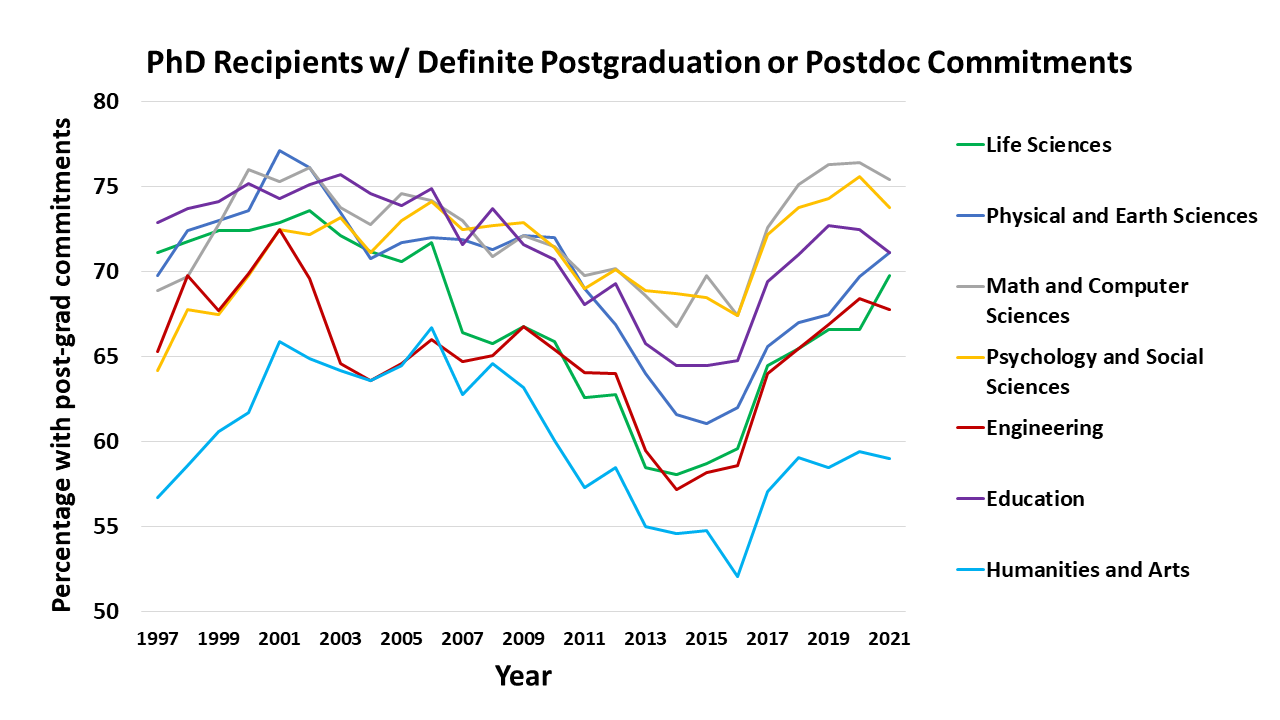
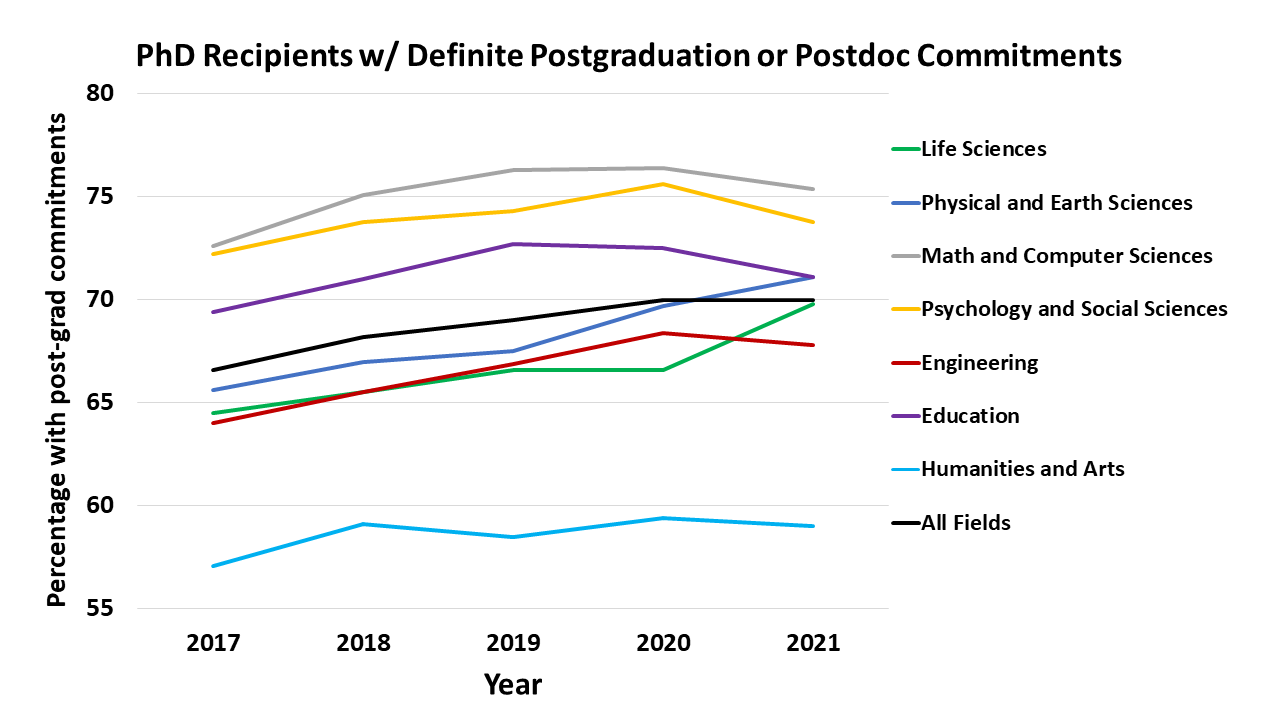
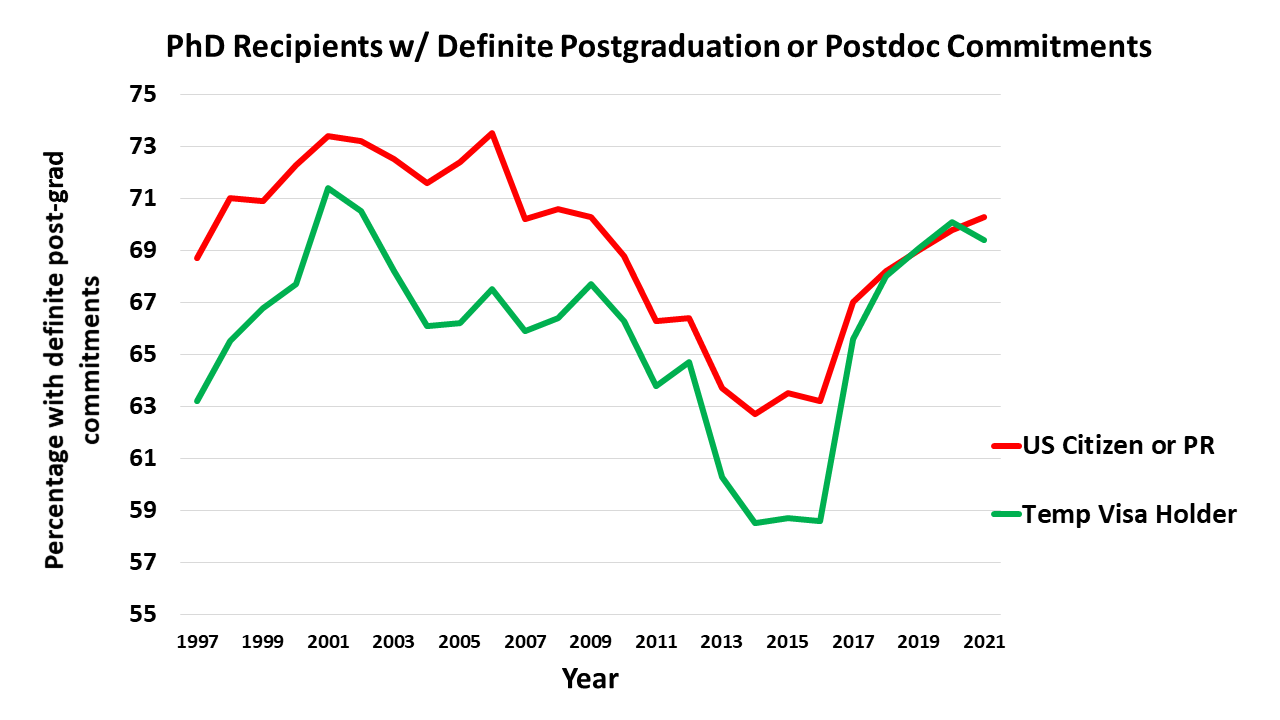
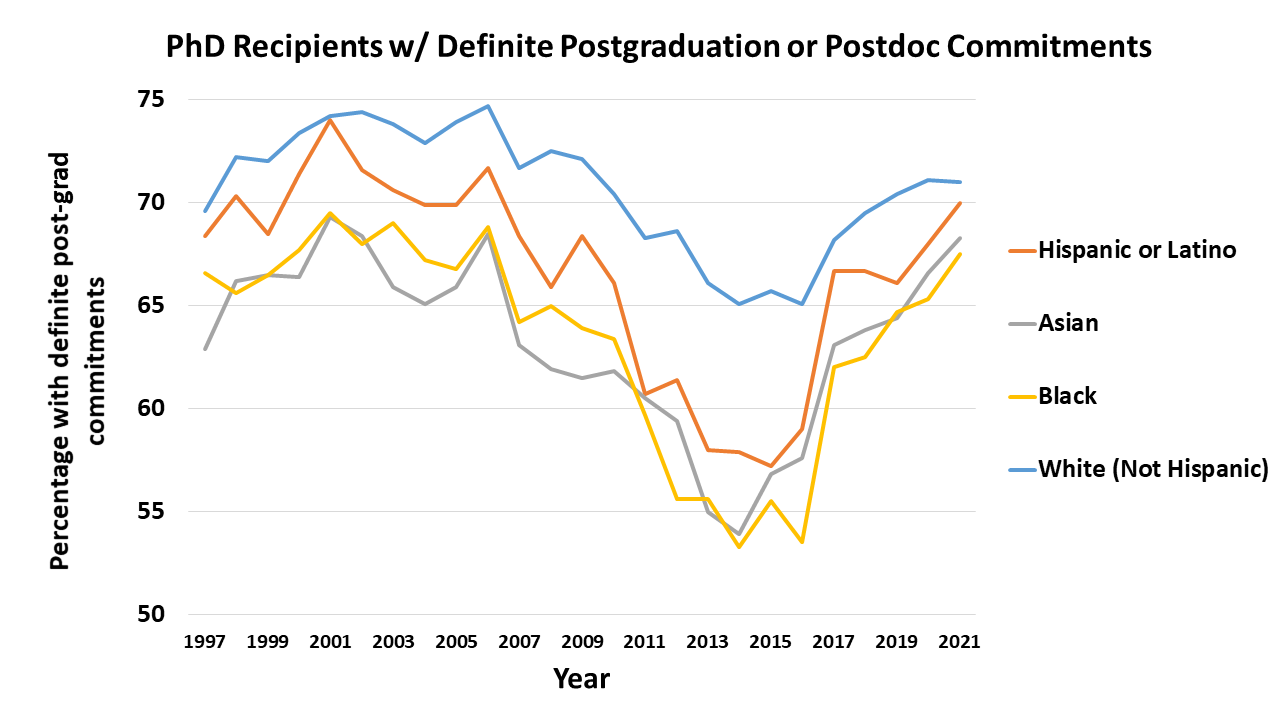
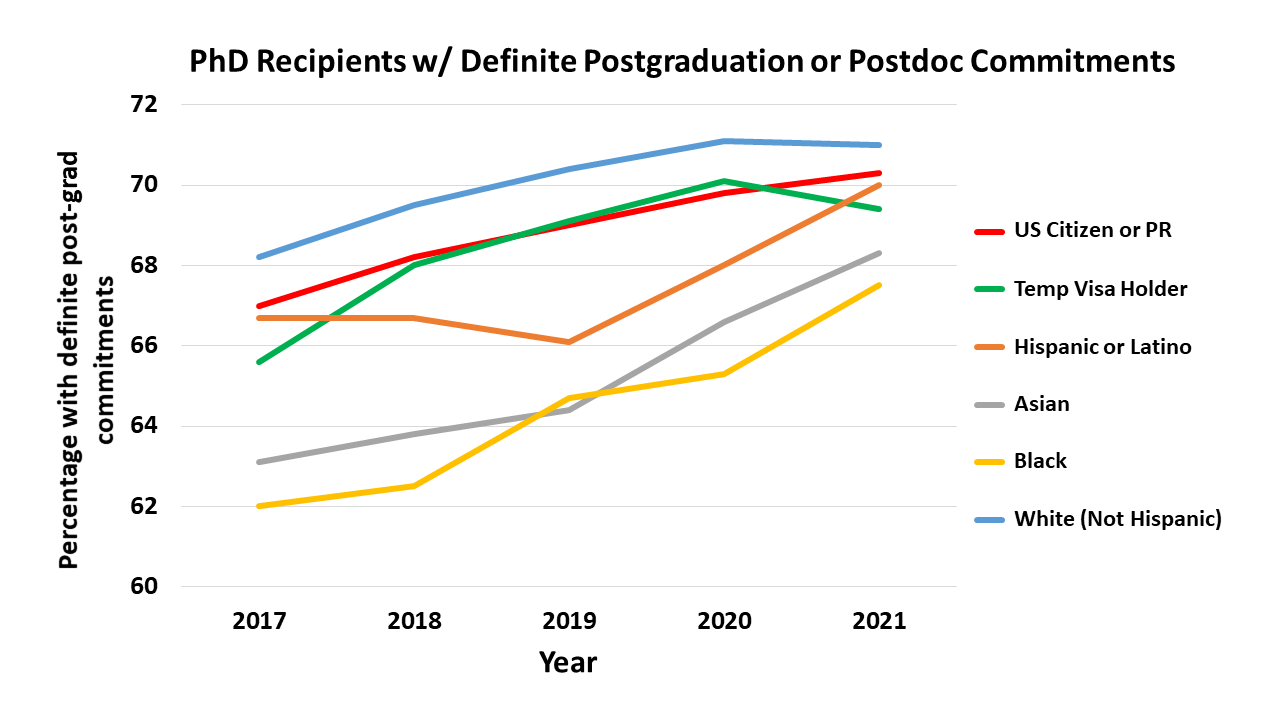
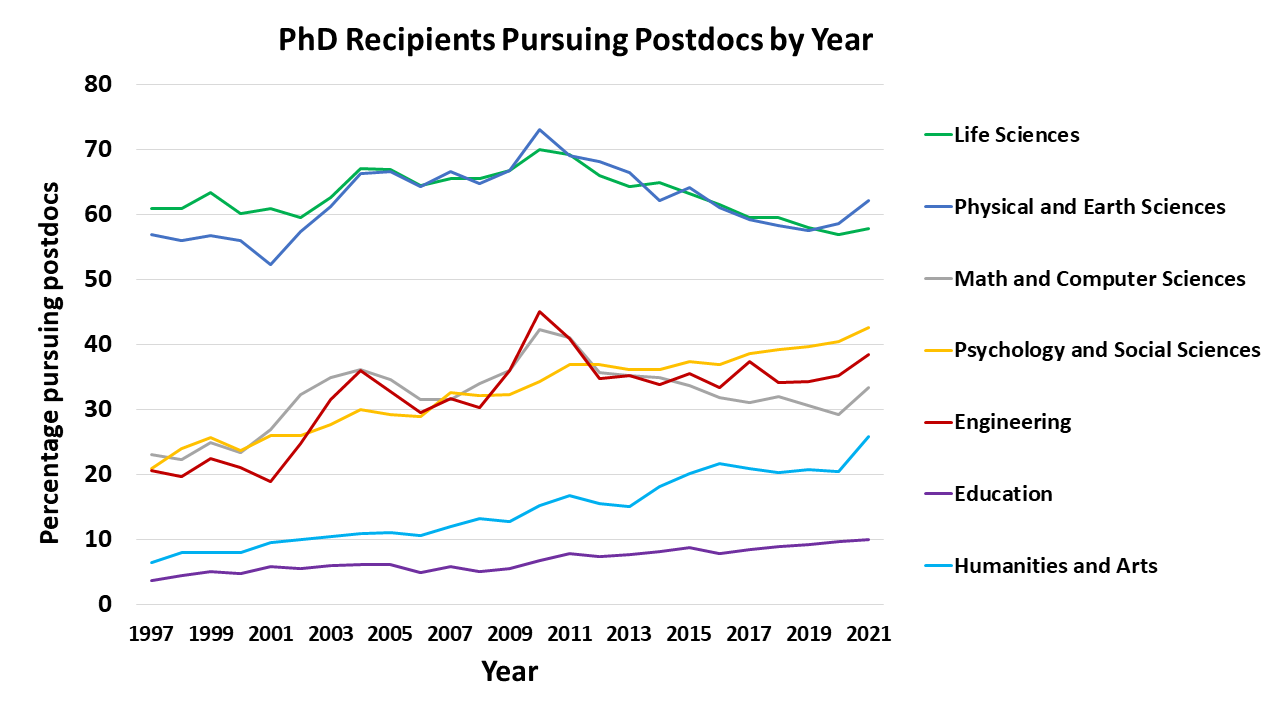
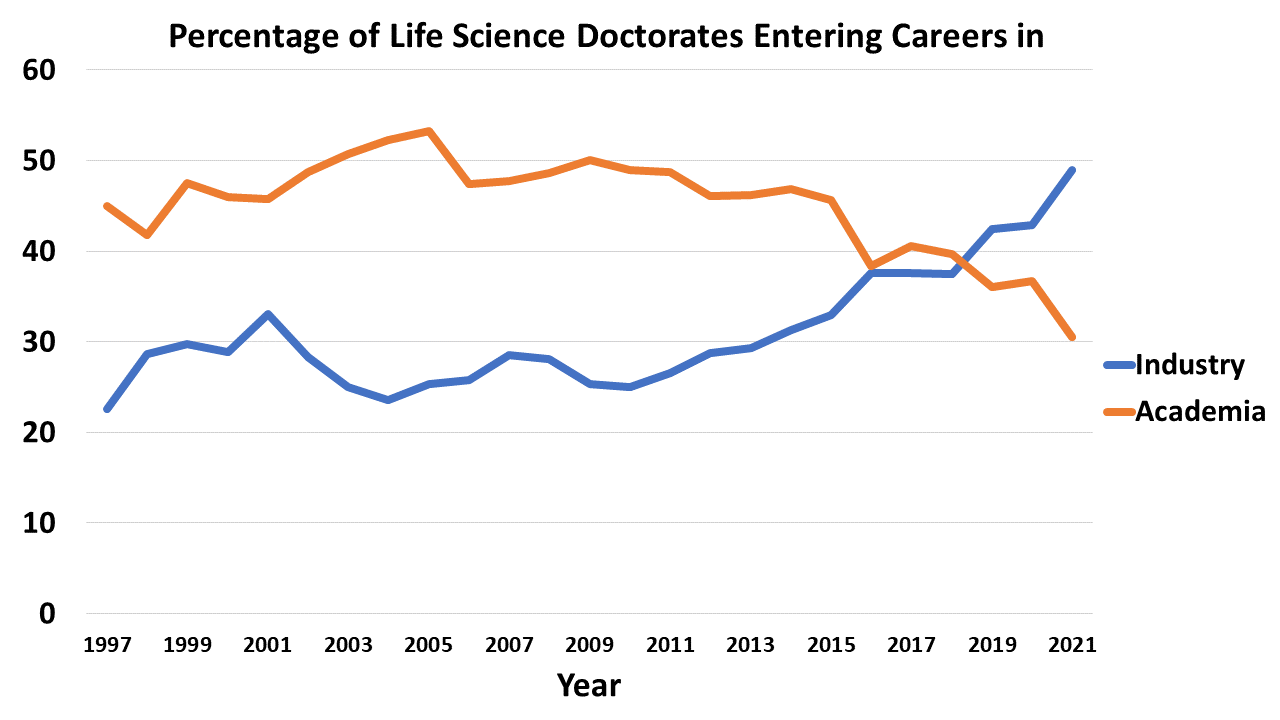
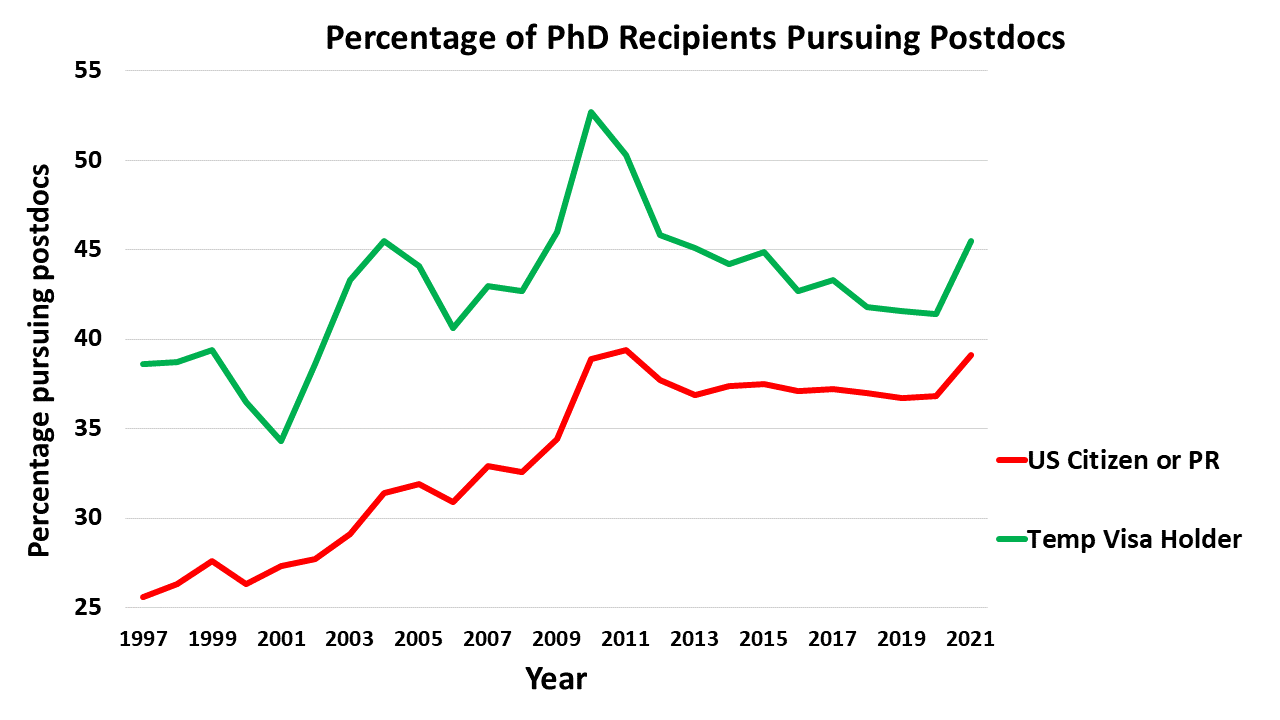
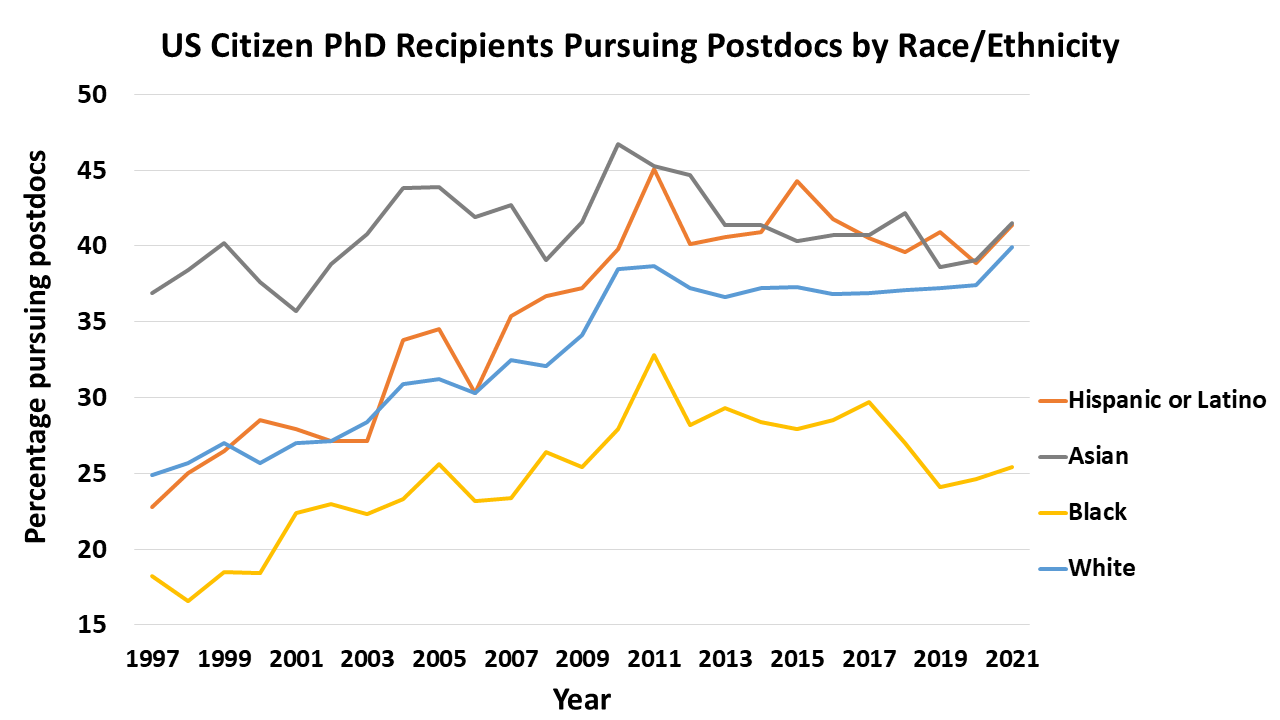
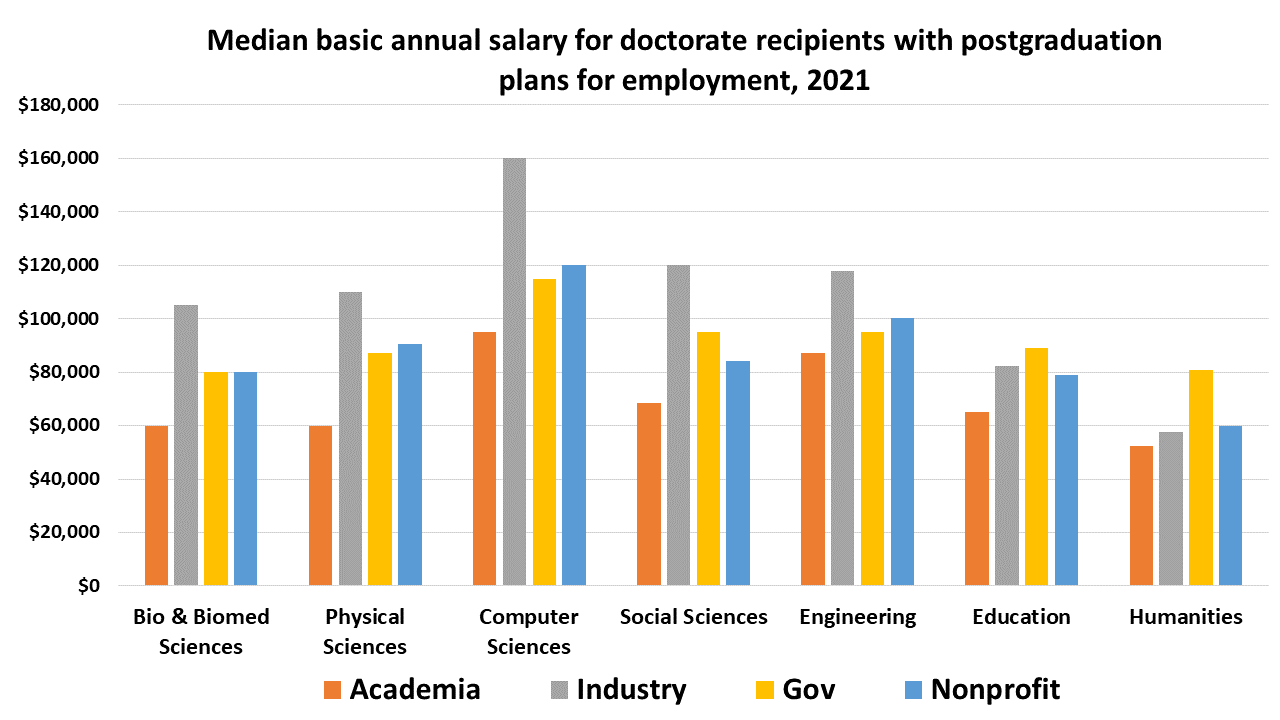
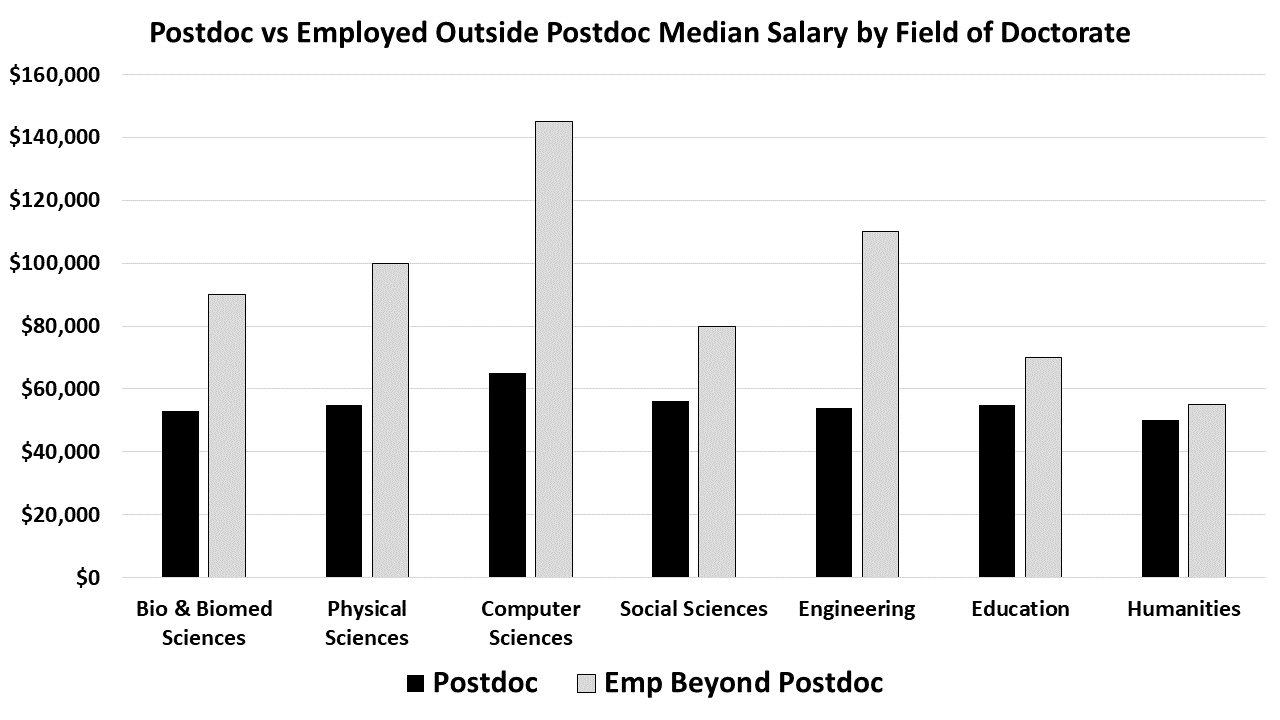

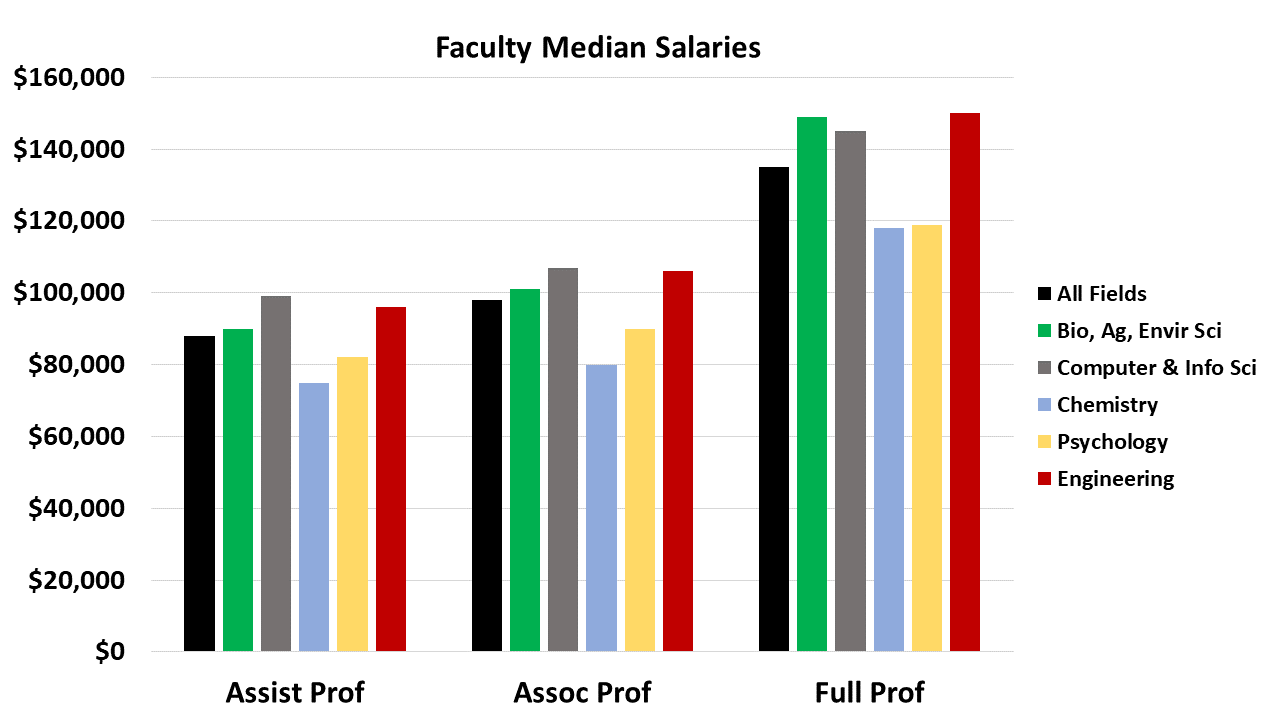
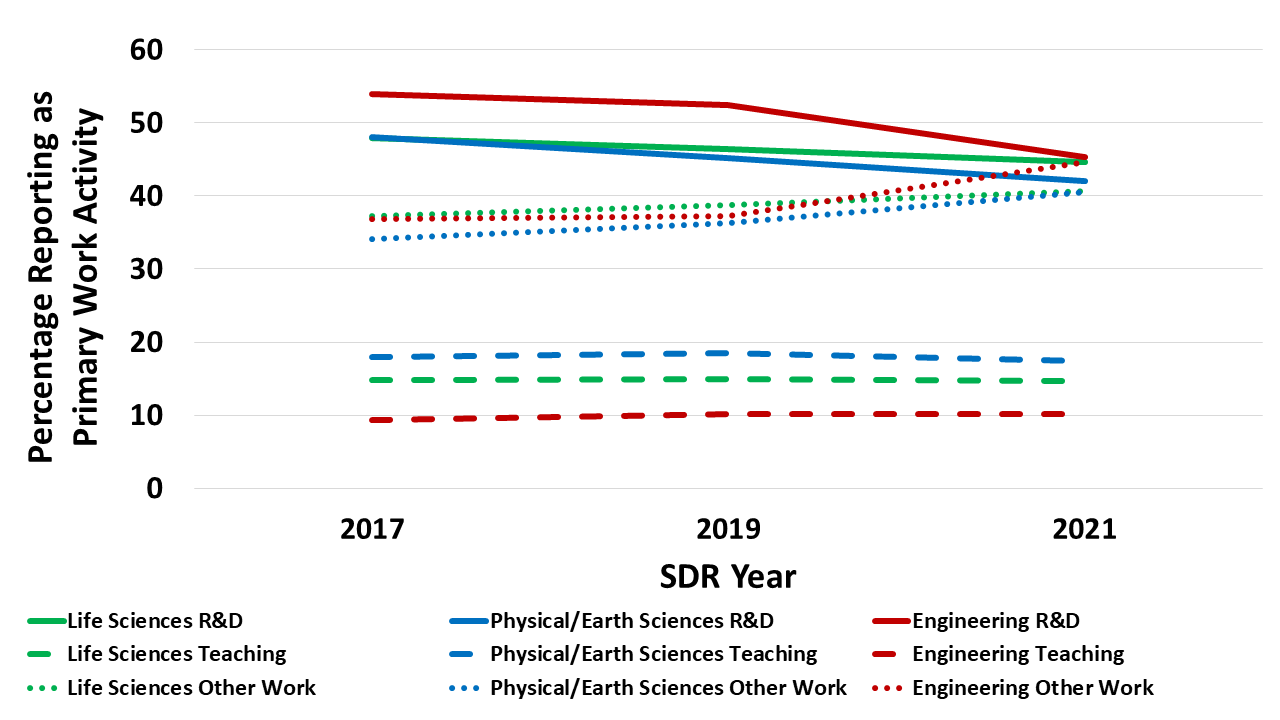
 RSS Feed
RSS Feed